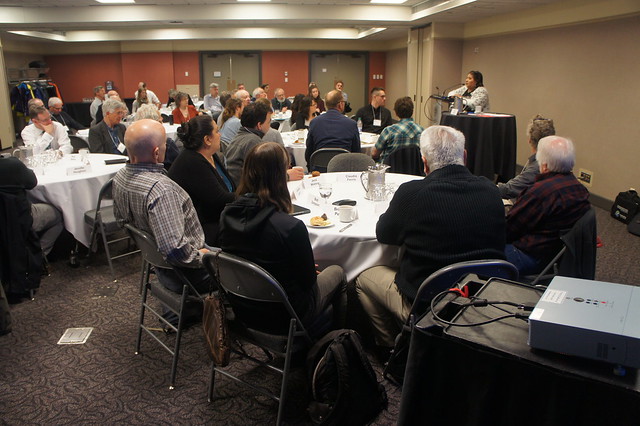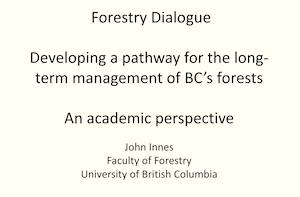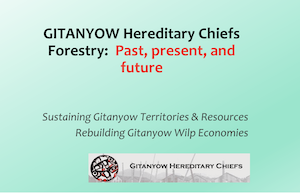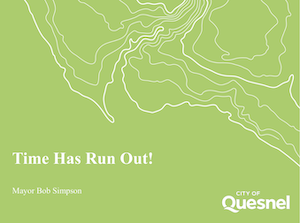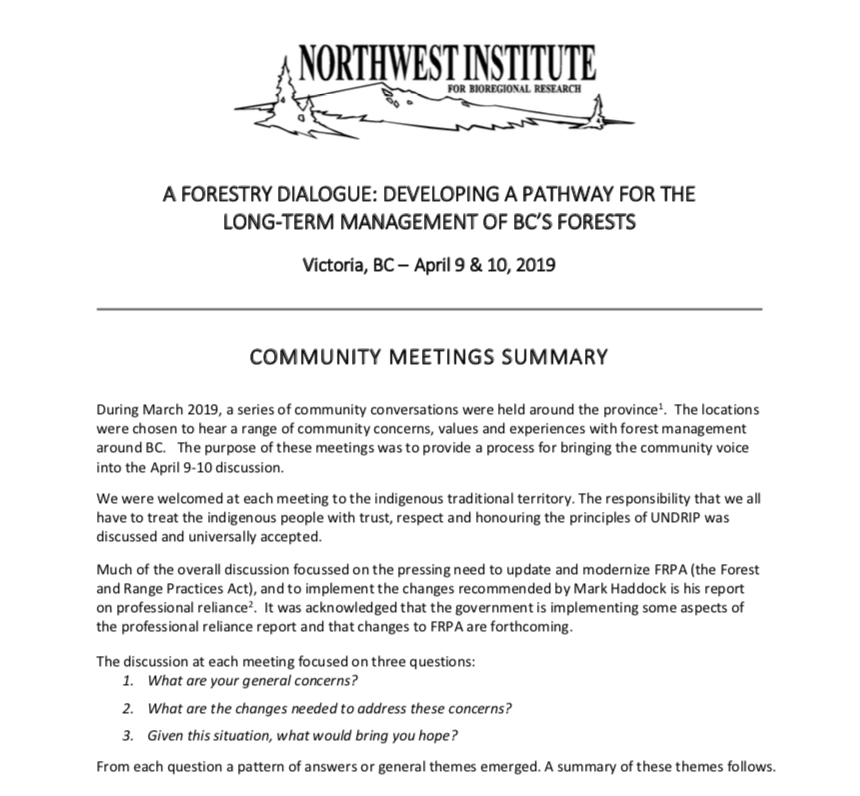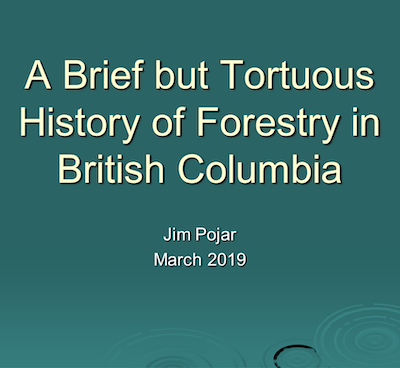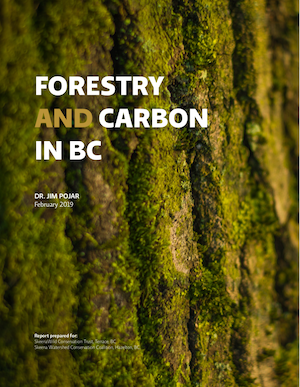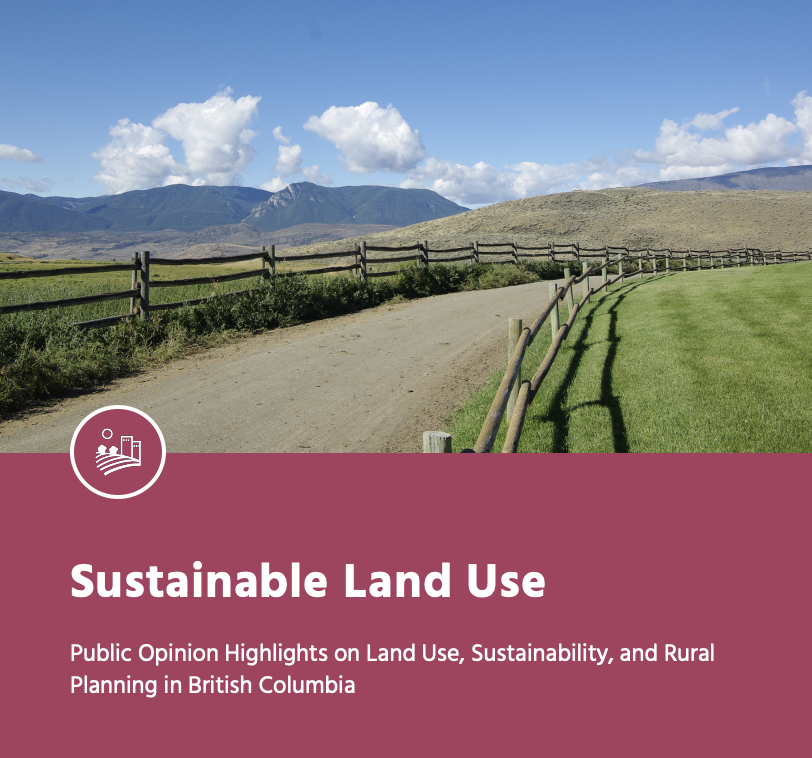Table of LNG Projects in Northwest BC
2024
A table providing details on the proposed Liquified Natural Gas projects in Northwest British Columbia. Last updated August 2024.
Technical Review of the Telkwa Coal Mine Proposal
2023
This review was conducted by Dr. Patrick Littlejohn, P.Eng., Senior Chemical/Metallurgical Engineer with Source and a Qualified Professional in BC in the area of mine water treatment and discharge planning. It provides a third party technical review of the Tenas Coal Project Environmental Assessment Certificate Application and was conducted to support the Northwest Institute during the public comment period for the Application. Download the report here.
This review was conducted with the following focus areas and questions in mind:
- Geochemical sampling program – are the mineral samples collected representative of coal ore, ore halo & waste rock? Was the geochemical testing program rigorous? How much selenium is present in project rock?
- Source control – does the Project apply appropriate Acid Rock Drainage (ARD) mitigation measures in ways that make sense and align with overall mine plan and water balance (i.e. Potentially Acid Generating (PAG) rock submergence, waste rock pile design)? What is the potential for selenium release?
- Site water balance – is site water management infrastructure robust and capable of handling a wide range of weather conditions (i.e. wet years, dry years, extreme weather events)?
- Mine contact water quality – how contaminated is mine contact water expected to be and are predictions reasonable? How sensitive are predictions to things that may be uncertain, like PAG characterization, site water balance?
- Water treatment approach and capacity – how is water treatment applied, and are water treatment goals achievable with the technologies describe? Is water treatment capacity sufficient? Will treatment address potential selenium contamination?
- Discharge location – does the project design follow BC best available technology/initial dilution zone policy?
Summary of Findings
Significant risks were identified with the Application in each of these subject areas. To summarize:
- The geochemical sampling program is not sufficiently robust to characterize the ML/ARD potential of the disturbed material. The proposed approach to MLARD management relies entirely on source control, which leaves no room for error in materials identification and handling. Significant risk of onset of acid rock drainage, neutral metal leaching and selenium contamination exists with the proposed project.
- The Application contains insufficient evidence/analysis supporting the idea that the implementation of source control is practical and can be executed under a range of climate conditions or in the context of geochemical uncertainty.
- The Application includes water management features that are designed to meet 1-in-10 year storm events. Discussion of variable climate conditions (i.e. climate change) are limited. Given that the project is to operate for over 20 years with a total lifespan including closure/post-closure of close to 50 years, use of shorter or less conservative design basis adds risk of impacts to the environment.
- Expectations of mine water quality are optimistic and do not entertain the possibility of onset of ARD if any aspect of the mine plan does not go according to plan (i.e. mishandling of PAG material, failure of source control measures, higher than expected geochemical source terms, or flushing of oxidation products prior to material submergence).
- Water treatment is not included in the application. Any contamination that occurs in mine contact water is proposed to be released directly to the receiving environment without treatment. This is a significant deviation from best practices in BC and represents a major risk to the downstream environment.
- The Application proposes site specific water quality targets that are significantly less conservative than BC’s generic guidelines using a process that does not align with BC’s policy. The Application does not include use of Best Available Technology to prevent contamination and so does not follow BC policy on initial dilution zones.
Overall, the project design is predicated on an optimistic interpretation of limited geochemical data and the ability to execute a mine waste and water management strategy with little margin for error. Modeling conducted by the proponent indicates that they expect the immediate receiving environment to be degraded with mine-borne contaminants including a 200 fold increase in selenium concentration in local creeks. The project does not follow BC policy on application of Best Available Technology to prevent contamination in the downstream environment. All of these factors mean that there is significant risk of the project having both short and long term negative impacts on water quality in the downstream environment.
Open letter: Allow public input on Enbridge’s fracked gas pipeline extension application
2023
March 21, 2023
The Honourable George Heyman
BC Minister of Environment and Climate Change Strategy
Via email: [email protected]
Open letter: Allow public input on Enbridge’s fracked gas pipeline extension application
DOWNLOAD THE LETTER HERE
Dear Minister Heyman,
We, the undersigned organizations, write to express our concern regarding the environmental implications and lack of public input on the decision-making process to extend the Westcoast Connector Gas Transmission (WCGT) pipeline certificate. Enbridge Inc.’s application to push the deadline to start building the pipeline for another five years, until November 2029, and the process for granting this extension deserves to be informed by the people and communities who will be impacted.
First approved in 2014 and already receiving a five-year extension in 2019, the WCGT pipeline would transport fracked gas from northeastern B.C. to a liquified natural gas (LNG) facility near Prince Rupert. It will cross over 700km of valuable and irreplaceable ecosystems, including the critical habitat of the woodland caribou - listed as a ‘threatened’ species under the federal Species at Risk Act - as well as hundreds of salmon-bearing streams in the Fraser and Skeena watersheds. It will cross the territories of several Indigenous nations and communities, many of whom have not provided consent to this project. We continue to witness, with Coastal GasLink, how a fracked gas pipeline can trample on Indigenous rights and accrue violation after violation of its environmental assessment permit.
The WCGT pipeline will have significant implications for the achievement of B.C.’s climate targets and our efforts to address climate change. The original project assessment report states that the construction of the pipeline will produce up to 2.5 million tonnes (Mt) of greenhouse gas (GHG) emissions while operations will add up to 4.4 Mt of GHGs annually. B.C. is already failing to meet our emissions targets and a project of this scale will put our climate goals even further out of reach.
The direct emissions from the project are only a fraction of its broader implications. The pipeline will facilitate further emissions by enabling expansion of the fracking industry in northeast B.C. and new LNG terminals on B.C.’s north coast. Fracking is already B.C.’s largest source of GHG emissions, yet we still don’t know just how significant these emissions are given that B.C. significantly undercounts methane.
What we do know is that LNG terminals are set to become the biggest point-source emitters of GHGs in B.C. Electrifying these facilities would reduce emissions but remains a pipe dream given that B.C. does not have enough electricity to do so. The Ksi Lisims LNG facility, which is undergoing environmental assessment and is considering using the WCGT pipeline, will either produce 1.9 Mt of GHGs a year or use up 5,000 GWh of electricity per year – the generating capacity of another Site C dam. There is no simple way around the GHG implications of these projects.
It gets worse. There will be massive emissions from the eventual combustion of the fracked gas that the WCGT pipeline helps make possible. The fracked gas that this pipeline can transport at full capacity (8.4 bcf/day) would produce about 162 Mt of GHGs a year, which is 2.5 times more than the entire province of B.C. emitted in 2020. B.C. should not become an exporter of climate catastrophe.
The project has had 10 years to make a start but has failed to do so. In this time, the world has changed drastically. The urgency of the climate crisis is now crystal clear, as people in B.C. bear the brunt of increasing forest fires, heat waves, and floods of unprecedented magnitude. As Premier Eby stated in his first speech as premier: “We cannot continue to expand fossil fuel infrastructure and hit our climate goals.” The world is turning away from fossil fuels – including so-called “bridge fuels” like fracked gas – at an increasing pace. Further, we do not accept any more massive infrastructure projects that violate Indigenous rights and harm our lands.
Therefore, we request that you establish a public comment period for both decisions relevant to Enbridge’s emergency extension application: 1) whether to vary the Environmental Assessment Act (“Act”) to allow this extension to be considered and 2) whether to grant the extension.
As this is the project’s second extension request, the Act must first be varied to allow an extension to be considered. The variance must be shown to be necessary due to an emergency and be in the public interest. A robust, informed decision on whether Enbridge was actually delayed due to an emergency and whether a variation is in the public interest can only be made by hearing from the public.
If a variation is granted, the public must also be consulted on whether or not to give Enbridge another five years to build its pipeline. We’re sure that the public will have plenty to share on this subject.
In 2021, when the KSM Mine asked for emergency extension of its own, the B.C. Environmental Assessment Office held a public engagement process on both the variation decision and the extension decision. The reasons for both decisions referred to the information gathered from the public. The Minister’s reasons stated that “I would expect the EAO…to follow a similarly rigorous process” for future emergency extension requests.
We are asking that you establish such a process now, starting with a public comment period for the variance decision.
Sincerely,
Pat Moss
Executive Director, Northwest Institute
Babine River Foundation
Carrie Collingwood, Director
Canadian Association of Physicians for the Environment
Melissa Lem, President
Citizen's Oil & Gas Council
Mike Sawyer, Executive Director
Climate Justice Victoria
Eric Doherty, Director
Communities Against Supertankers
Valine Brown, Director
Council of Canadians, Campbell River
Richard Hagensen, Chairperson
Council of Canadians, Nelson/West Kootenay
Sandra Hartline
Council of Canadians, Terrace Chapter
Dave Shannon, Climate & Energy Chair
Council of Canadians, Victoria Chapter
Barbara Mitchell-Pollock, Co-chair
David Suzuki Foundation
John Young, Energy Transition Strategist & BC LNG Campaign Lead
Dogwood
Kai Nagata, Communications Director
Douglas Channel Watch
Cheryl Brown, Chair
Friends of Wild Salmon Coalition
Des Nobels, Past chair
Georgia Strait Alliance
Christianne Wilhelmson, Executive Director
Gidimt’en Checkpoint
Eve Saint, Divestment Financial Campaigner
Greenpeace
Keith Stewart, Senior Energy Strategist
Northwest Watch
Anne Hill, Chair
Shift Action for Pension Wealth and Planet Health
Patrick DeRochie, Senior Manager
SkeenaWild
Greg Knox, Executive Director
STAND Earth
Sven Biggs, Canadian Oil and Gas Program Director
T. Buck Suzuki Foundation
Alaina Pyde, North Coast Campaigner
West Coast Environmental Law
Gavin Smith, Staff Lawyer
Wilderness Committee
Peter McCartney
Cc: Premier Eby
Liquefied Natural Gas
2023
The Northwest Insitute has produced a number of publications about Liquefied Natural Gas proposals in BC including a fact sheet, an analysis of greenhouse gas emissions, an up-to-date table of proposals and a request for a Strategic Environmental and Economic Assessement of BC LNG proposals.
To read these publications, visit our LNG Projects page.
Cost Benefit Analysis of the Telkwa Coal Mine Proposal
2022
On behalf of the Northwest Institute, Swift Creek Consulting has prepared an assessment of the Telkwa Coal Mine's net economic benefits and comment on the Project’s public interest case. Economic benefits play an out-sized role in public interest evaluations, and therefore it is crucial to closely examine economic net benefits so that the BC government is properly informed. Download the report here.
Critical Review of the Telkwa Coal Mine Socio-Economic Assessment
2022
This report provides a critical review of the socio-economic components of the environmental impact assessment prepared for the proposed Tenas (Telkwa) coal project, which would be located seven kilometres southwest of Telkwa. It includes an analysis of project need and benefits, and economic, demographic, infrastructure and methodological issues.
Telkwa Coal Mine Plan - Key Issues Related to Water
2022
Telkwa Coal Mine Plan – Key Issues
_______________________________________________________
By Patrick Littlejohn, PhD, P.Eng for the Northwest Institute June 21, 2022
These comments are based on a preliminary review of the Telkwa Coal Mine application by Patrick Littlejohn, PhD, P.Eng., a mining professional with more than ten years of experience in mine water treatment and management in BC. He will conduct a more fulsome review and contribute written comments to the Northwest Institute as part of the Environmental Assessment process.
1. Lack of appropriate water treatment: The project proposes very limited water treatment to remove suspended solids (i.e. dirt/sand particulate) and does not propose treatment of any dissolved solids in water. This does not align with BC policy on use of Best Available Technology and use of Initial Dilution Zones. Basically this policy says that if a mine expects to have contaminated water, the mine owner needs to use Best Available Technology to treat it before considering potential impacts to the environment. There is reasonable potential for water contamination from selenium and acid rock drainage. These are fairly common issues in the mining sector and there is lots of precedent in BC and elsewhere for treatment of mine water for these kinds of contamination. The project discusses active water treatment as a contingency measure but this should be part of Plan A.
2. Relaxation of water quality standards: BC has generic water quality guidelines to protect the environment. The project proposes to use relaxed water quality standards for selenium that are 4 to 17 times higher than BC’s standard guidance. Project specific water quality guidelines can be developed if there is a firm scientific basis for why the generic standard is inappropriate for a specific site and BC has detailed policy guidance on this process. Based on my preliminary review, the Tenas project does not appear to follow the policy for development of a Science Based Environmental Benchmark and so their basis for relaxing water quality guidelines for the project is questionable.
3. Optimistic design: Overall, the mine plan proposal paints an optimistic picture in terms of managing water and preventing contamination. Even the best mine plan can have problems – maybe there is more or less rain than anticipated, maybe economic conditions change and the mine goes on temporary closure, maybe source control doesn’t work well enough to prevent contamination, maybe there is more contamination released from rock than anticipated. The project application describes a mine plan that could work if everything goes perfectly. However, mines never go exactly as planned and so best practice is to have robust designs that incorporate redundancy to mitigate risks and prevent impacts.
In short:
• The mine plan does not follow BC policy with respect to water treatment.
• The mine plan proposes to use BC water quality standards that are significantly higher than BC’s generic limits.
• The project design does not seem robust enough to proactively manage risk to the environment.
Forestry Dialogue
2019
April 9-10, 2019
Background
As a consequence of the May 2018 Professional Reliance review report the conversation on the state of the forests and their management was revitalized. The professional reliance recommendations called for and are bringing forward a broad, renewed call for change in BC’s approach to forest management.
The current government in its election platform, and subsequently in their mandate letters, made a commitment to address such critical matters as: species legislation, reconciliation, environmental assessment, land and water use planning, wildlife habitat management, and water sustainability. However, each of these initiatives is underlain by the need for diverse and ecologically healthy forests, and without broad forestry reform will be largely unsuccessful.
Recently a number of government initiatives directed to updating FRPA’s legal and policy framework are moving forward. As well there are other opportunities to build on, such as: the activities of the Forest and Range Practices Advisory Committee, the Coastal and Interior Revitalization Initiatives, First Nation reconciliation and the Green-NDP CASA Agreement.
However, it remains unclear how, or if, the current government will change the long-term management of BC’s forests. As well the current initiatives are being done in a vacuum as a long-term vision is lacking.
There is therefore a growing recognition by a wide-range of organizations that now is a good opportunity to begin the change needed to reform forest management in BC; and to develop a long-term vision for a more holistic approach to the management of the forest environment and our natural resources.
This forest Dialogue was suggested as one method for moving this vision and conversation forward.
Process
The Dialogue was organized by the Northwest Institute for Bioregional Research, with funding support from Tides Canada. The gathering was designed more as a dialogue than a traditional conference. Attendance was limited to ~65 people who understood and supported the purposes. Attendees were a diverse range of influential individuals representing First Nations, university, organizations, NGO’s, unions and business from throughout the province. Minister Doug Donaldson spoke at Noon on April 10th. Other speakers were Dean John Innes UBC Forestry, Mayor Bob Simpson from Quesnel, Dr. Jim Pojar retired forest ecologist and Joel Starlund, Executive Director of the Gitanyow Hereditary Chiefs.
Download a Summary of the April 9-10 Dialogue
Prior to April 9-10, a series of community discussions focusing on key local concerns were held with a variety of community representatives from around the province. Feedback from these discussions helped frame the approach to the April Dialogue.
Download a Summary of the Community Discussions
Victoria Gathering Photo Album
Presentations
Following are the presentations that the five key speakers delivered at the Dialogue, both video and their accompanying powerpoint. (Video portion coming mid May 2019)
The Academic Perspective
Dr. John Innes, Dean UBC Faculty of Forestry
Download PDF
View Video
The Indigenous Perspective
Joel Starlund/Sk’a’nism Tsa ‘Win’Giit, Executive Director Gitanyow Hereditary Chiefs
Download PDF
View Video
The Ecological Perspective
Jim Pojar Ph.D., R.P.Bio., Senior Ecologist (ESA)
Download PDF
View Video
The Community Perspective
Bob Simpson, Mayor City of Quesnel
Download PDF
View Video
The Government Perspective
Hon. Doug Donaldson, Minister of Forests, Lands and Natural Resource Operations, and
Rural Development
View Video
These four documents were provided to read before attending.
A Brief and Torturous History of Forestry in British Columbia
Dr. Jim Pojar, 2019. This document was developed by Jim specifically as a background piece for the Forest Dialogue. It contains a storehouse of historical knowledge.
A Sustainable Land Use Public Opinion Poll
Prepared by the Real Estate Foundation, 2019.
These references were provided for general context:
Healthy Forests-Healthy Communities by Bill Bourgeois. Visit website
Restoring Forestry in BC: The story of the industry's decline and the case for regional management. Bob Williams January 2018. Visit website
Professional Reliance Review. Mark Haddock, 2018. Download PDF
A New Climate for Conservation: Nature, Carbon and Climate Change in British Columbia. Dr. Jim Pojar, 2010. Download PDF
Taking Nature's Pulse: The Status of Biodiversity in BC. 2008. Visit website
Rio Tinto Alcan Environmental Appeal Board Hearing Summaries April - June 2015
2015
Two outdoors-loving Kitimat teachers, Lis Stannus and Emily Towes, have launched a case with the Environmental Appeal Board against the Ministry of Environment (MOE). The two appellants are challenging MOE’s decision to allow Rio Tinto Alcan to increase its sulphur dioxide emissions from its Kitimat aluminum smelter by 55 percent above current permit levels. Even more, MOE is allowing this without the any scrubbers installed at the smelter. Emily and Lis both suffer from asthma, and both teachers are concerned about their students’ health and worried about the effects of the increased emissions on the forests and waterways of the Kitimat-Terrace valley.
The hearings are expected to take four weeks. The first two weeks of hearings will be held in Victoria from April 27 -May 1 and from May 11-15. Then there will be two weeks of hearings in Kitimat from June 1-5 and June 8-12.
Hearing Summaries
Victoria, April 27 2015, Day 1
Victoria, April 28-29 2015, Day 2 and 3
Victoria, April 30 2015, Day 4
Victoria, May 11-12 2015, Day 6 and 7
Victoria, May 14-15 2015, Day 9 and 10
Kitimat, June 11-12, Day 19-20
Victoria, June 29-30, Final Argument
Brochure: What you need to know about Petronas and its impacts on Skeena Salmon
2014
This brochure provides an overview of the impacts that Petronas' proposed Pacific Northwest LNG facility poses to juvenile salmon habitat in the Skeena Estuary. It was created in November 2014 and distributed widely to communities in the Skeena watershed.
Brochure: LNG in Northwest BC
2014
This publication provides an overview of proposed LNG projects in Northwest BC and takes a close look at air pollution in Kitimat/Terrace and salmon impacts in the Skeena Estuary. It was produced in May 2014 and distributed widely across the region from Haida Gwaii to Burns Lake.
Comparison of the BC government’s submission on Enbridge and the JRP’s recommendation
2014
This pamphlet provides a brief comparison of the BC government's final submission to the Joint Review Panel and the Joint Review Panel's recommendation. It also highlights critical information regarding the behaviour of diluted bitumen in water, and impacts to humpback whale habitat that were not included in the review.
Download the pamphlet (3.9 MB)
Documenting the Enbridge Joint Review Panel Hearings
2013
If built, the proposed Enbridge Northern Gateway Pipeline would carry diluted bitumen from the Alberta oil sands westward to a new tanker port at Kitimat, and carry condensate (a bitumen diluent) eastward to Alberta. The issue is of critical concern to Northwest British Columbians and people from across Canada. Currently, the proposed project is being reviewed by a Joint Review Panel headed by the National Energy Board. The panel travelled throughout Northwest B.C. and elsewhere in B.C. and Alberta to hear from citizens on the matter. The Northwest Institute documented the hearings throughout the Joint Review process.
To read summaries of the community and technical hearings, visit our Enbridge Joint Review Panel page.
Potential Effects of an Oil Pipeline Rupture on Reach 2 of Morice River
2012
This submission focuses on a portion of the pipeline route that is located adjacent to Morice River, 70 km south of Smithers. Within this area, Morice River has formed a wide floodplain that contains numerous active secondary channels, log jams and wetlands that comprise the core spawning and rearing habitat for Morice River fish populations. Schwab (2011) indicates that slope instability in this area has the potential to rupture the proposed pipelines. This report examines the implications of a pipeline rupture and subsequent clean-up efforts to river processes, fish and fish habitat.
Jan. 12, 2012 Media Release (PDF)
Analysis of Skeena River Tributaries Downstream from the Proposed Enbridge Pipeline
2011
Jack A. Stanford, and Diane C. Whited were contracted by the Northwest Institute for Bioregional Research (Smithers, BC) to use existing databases to produce a series of maps describing the geomorphology of tributaries of the Skeena River, British Columbia that will be crossed by the proposed Enbridge pipeline. The objective was to develop and map metrics that delineate the areas of the Skeena River and its tributaries most vulnerable to potential pipeline spills associated with the proposed Enbridge corridor to Kitimat, BC. The analysis was based on the likely scenario that a spill would result in petrochemicals being carried downstream and distributed in the channels in relation to the geomorphology.
Comparison of the British Columbia and Federal Environmental Assessments for the Prosperity Mine
2011
This 2011 report, written by environmental lawyer Mark Haddock, concludes that the BC Environmental Assessment Office's (EAO) recommendation to approve Taseko Mines' proposed Prosperity Mine in B.C.'s west Chilcotin region was based on incomplete evidence and was the result of a hurried, flawed and less than objective process conducted by the agency.
July 20, 2011 Press Release (PDF)
Enbridge Joint Review Panel Workshop
2010
A workshop organized by the Northwest Institute to familiarize the community with aspects of the Joint Review Panel process.
Download presentation (5Mb PDF)
Environmental Assessment Workshop - Smithers, BC
2009
The Northwest Institute organized a 2009 workshop in Smithers on the Environmental Assessment Process.
Tony Pearce CEAA Presentation (400kb PDF)
Susan Rutherford EA Presentation (14Mb PDF)
Valuation of the Wild Salmon Economy of the Skeena Watershed
2006
The Northwest Institute commissioned IBM Business Consulting to conduct a valuation of the wild Salmon economy of the Skeena River Watershed. Their report estimates that the wild Salmon economy of the Skeena River can be valued at approximately $109,987,0001 based on a 2004 base year and 4-year average revenue or revenue-equivalents.
Download March 30, 2006 Media Release (PDF)
Community Futures and Choices in the Bulkley Valley
2001
This paper raises questions about the economic future of the Bulkley Valley using the proposed Telkwa Coal Project as the point of departure for its discussion into the economic prospects, choices and trade-offs that face all of the residents of the region as they opt for one set of economic opportunities over another, and one path of development over others.
Status of Salmon Spawning Stocks of the Skeena River System
2000
This report is part of a review of the status and prospects for Skeena salmon stocks and the fisheries they support.
Mushroom Project II
1999
Pine mushroom harvesting in northwestern B.C. is a growing economic activity, but it is unregulated and poorly documented. Often it conflicts with industrial forestry. This mushroom project has provided information on the distribution and habitat requirements of pine mushrooms in the Skeena-Bulkley Region and helped foster cooperation among stakeholders.
Mushroom Project
1998
Our first report on pine mushrooms review community issues and concerns around the sustainability of the resource within current land use planning in the Skeena-Bulkley Region, and consider the economic and social impact of the annual pine mushroom harvest on local communities, including First Nations' peoples.
Earlier Reports
1988
- Technical Analysis of Proposed Tulsequah Chief Mine, November 1997
- An Evaluation of Wildlife Research Related to the Proposed Tulsequah Chief Mine, October 1997
- Preliminary Avalanche Assessment of the Proposed Tulsequah Road, October 1997 Telkwa Coal Project Analysis, May 1999
- Ecological Description and Classification of Highly Productive Pine Mushroom Sites in Northwestern British Columbia, January 1999
- Pine Mushrooms and Timber Production in the Cranberry Timber Supply Area, February 1999
- Studies of the Pine Mushroom in the Skeena -Bulkley Region, June 1999 Status of Salmon Spawning Stocks of the Skeena River System, June 2000
- Community Futures and Choices in the Bulkley Valley, January 2001
- Roads and the Industrialization of Northern British Columbia, May 2003

